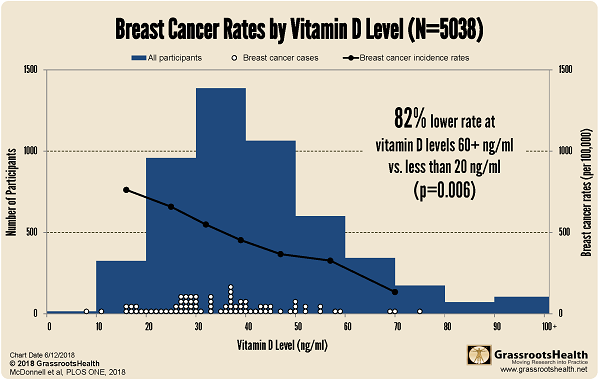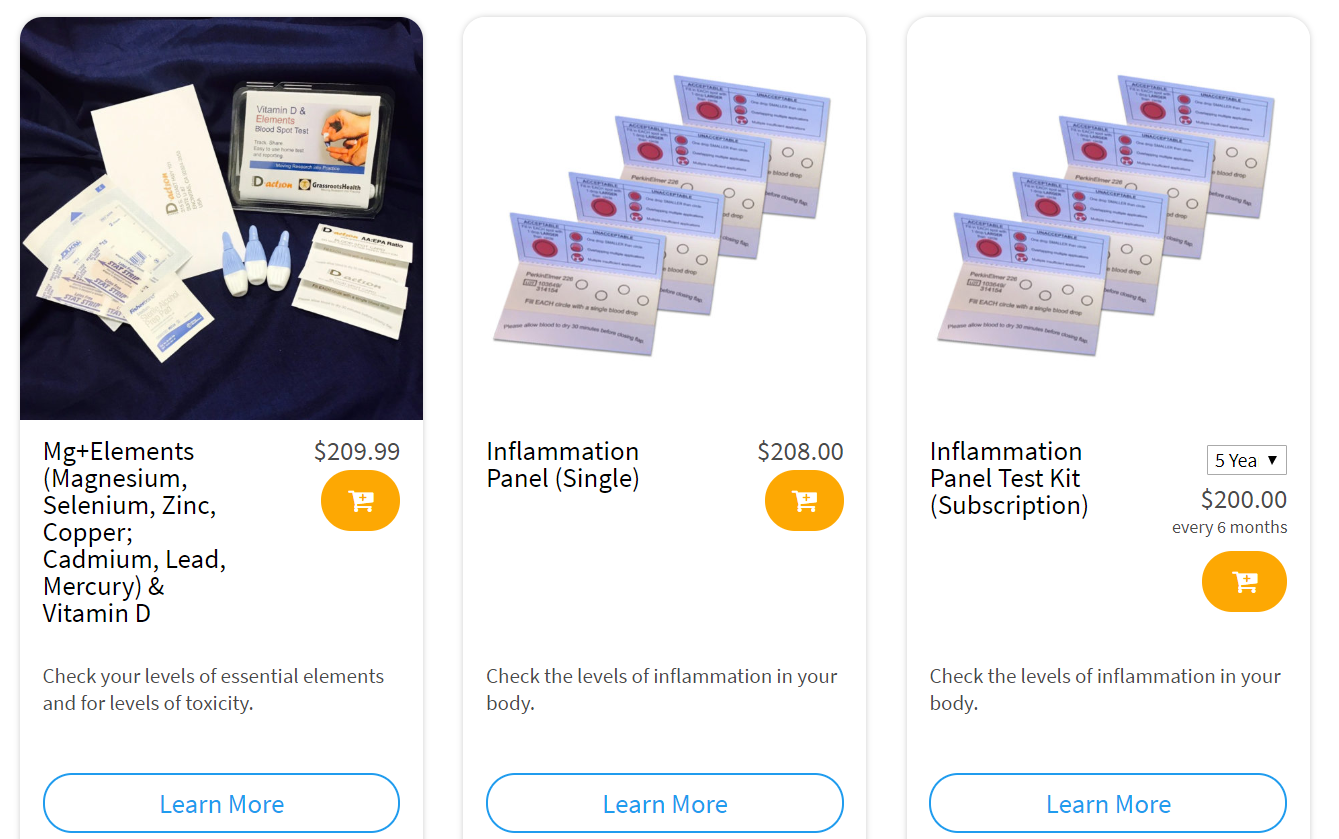Published on October 21, 2019
 October is Breast Cancer Awareness Month, but here at GrassrootsHealth Nutrient Research Institute we prefer to take the opportunity each October to focus on breast cancer prevention. To help educate the public on the effects of vitamin D and breast cancer prevention, we have created a series of posts focused on key research, with highlights from the first randomized controlled trial published on vitamin D and cancer, a second study that replicated those findings, and another using data from two cohorts to show a 71% reduction in the risk of cancer. While the earlier studies looked at how vitamin D was related to overall cancer rates in women, today’s post will describe a study that indicates having a level of at least 60 ng/ml of vitamin D may have additional benefits, specifically for breast cancer risk reduction.
October is Breast Cancer Awareness Month, but here at GrassrootsHealth Nutrient Research Institute we prefer to take the opportunity each October to focus on breast cancer prevention. To help educate the public on the effects of vitamin D and breast cancer prevention, we have created a series of posts focused on key research, with highlights from the first randomized controlled trial published on vitamin D and cancer, a second study that replicated those findings, and another using data from two cohorts to show a 71% reduction in the risk of cancer. While the earlier studies looked at how vitamin D was related to overall cancer rates in women, today’s post will describe a study that indicates having a level of at least 60 ng/ml of vitamin D may have additional benefits, specifically for breast cancer risk reduction.
Please share this informational series with all you know who may have or be concerned with getting breast cancer.
Having a Vitamin D Level of at Least 60 ng/ml may Provide Additional Benefit for Breast Cancer
Few studies have assessed the association between vitamin D levels and breast cancer risk in concentrations >40 ng/ml. A pooled analysis of Lappe’s two RCTs (2007, N=1129 and 2016, N=2196) and the GrassrootsHealth Cohort (N=1713) aimed to investigate the relationship between 25(OH)D and breast cancer risk across a broad range of 25(OH)D concentrations among women aged 55 years or older; results were published in 2018. Within the pooled cohort (N=5038), 77 women were diagnosed with breast cancer during the observation periods (median follow-up time: 4.0 years) with an age-adjusted incidence of 512 cases per 100,000 person-years. Comparing incidence rates of breast cancer by vitamin D level showed an 82% lower rate for women with 25(OH)D concentrations of at least 60 ng/ml compared to less than 20 ng/ml (P = 0.006).
As you can see on this chart, vitamin D levels have a significant correlation with breast cancer incidence. The horizontal-axis records increasing vitamin D levels, from 0 to 100 ng/ml. The vertical-axis on the left records the number of people in the study and is shown by the blue bars for each range of vitamin D levels. The number of breast cancer cases are shown by the white dots, with each dot representing a single case. It is worth noting that most of the dots are below 40 ng/ml (100 nmol/L), and very rarely above 60 ng/ml (150 nmol/L). The vertical-axis on the right is for the incidence rate of breast cancer which is shown on the chart by the black dots and connecting line.
Join the Study to Help Reduce Breast Cancer Incidence
Reduce Breast Cancer NOW! is a field trial of GrassrootsHealth using our methodology for moving nutrient research into practice. This model was developed and tested over 7 years, with over 10,000 participants, through the D*action project. All women can join this project to help demonstrate the effects of vitamin D on breast cancer prevention.
Donate to this project today!
Are you concerned about your vitamin D level and cancer?
Testing your vitamin D level regularly and taking steps to keep it at a target level of 40-60 ng/ml (100-150 nmol/L) is important for all stages of health. Through GrassrootsHealth Nutrient Research Institute, you can also test your omega-3 status, inflammation levels, and levels of essential nutrients and toxins. Find out your levels today! Log on to the shop (click the link below) to get your tests and see for yourself if your level can be improved.
Make sure you track your results before and after, about every 6 months!
Click Here to Access the Shop Page
How can I track my nutrient intake and levels over time?
To help you track your supplement use and nutrient levels, GrassrootsHealth Nutrient Research Institute has created an online tracking system called myData-myAnswers. For each specific supplement, you can track what days you take it, how much, and many other details. This will help you know your true supplemental intake and what patterns of use work for you to reach and maintain optimum nutrient levels. Check it out today!








